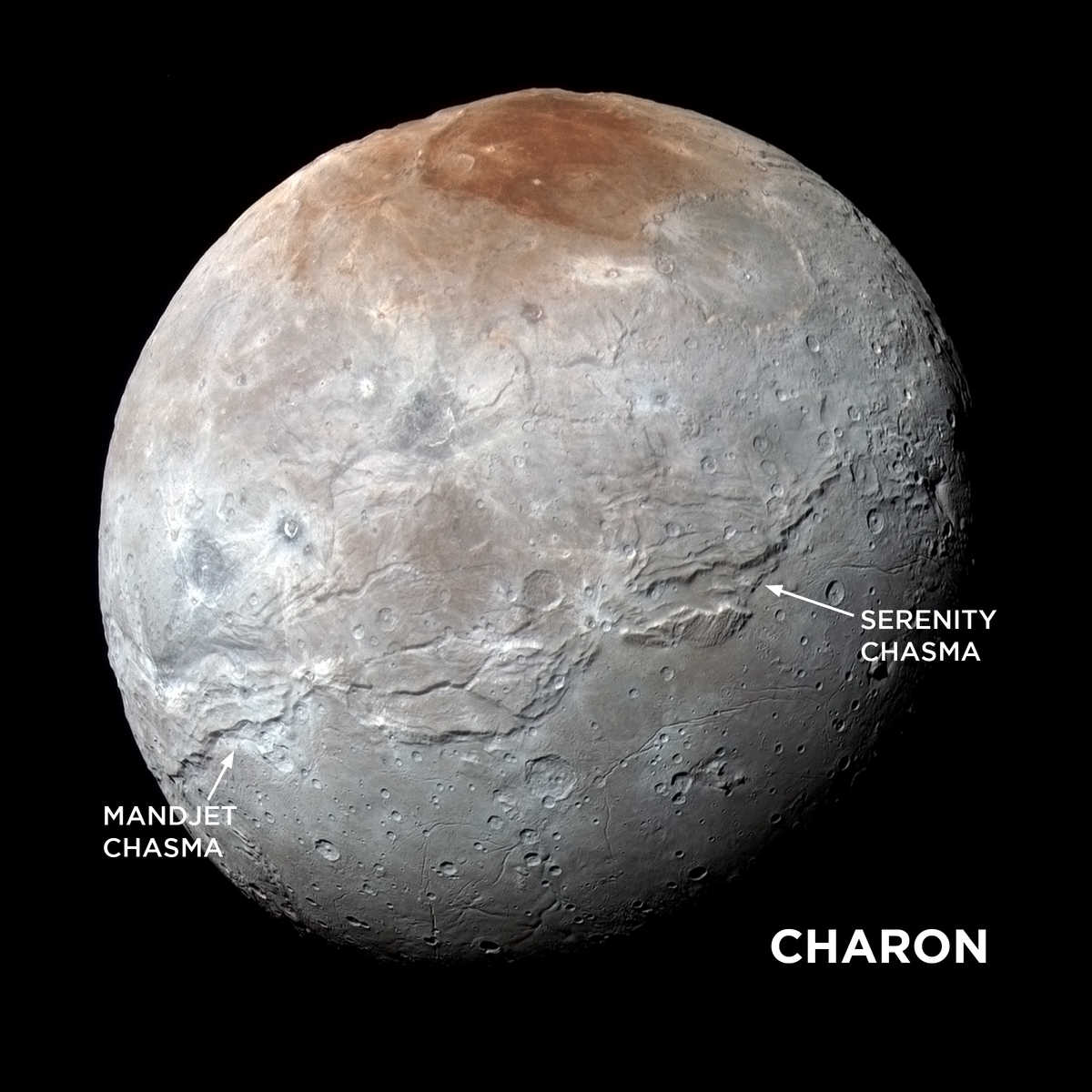Cracks on Pluto's moon Charon may be evidence of a frozen subsurface ocean
The icy volcanism of Charon may be caused by its internal ocean freezing, expanding, and cracking the outer shell of the moon if it was thinner than expected.

The icy volcanism of Pluto's large moon Charon and a belt of fractures across its surface may have been caused by a subsurface frozen ocean bursting through a thin ice shell.
New models suggest that when Charon's internal ocean froze it could have formed deep, elongated depressions along its midsection, but this might imply the outer shell was thinner than currently predicted at some point in the moon's history. The models also suggest that cryovolcanoes erupting with ice, water, and other materials are less likely in Charon's northern hemisphere.
The icy geological features of Charon came as a shock to scientists when NASA's New Horizons spacecraft visited the Pluto-Charon system in 2015, previously believing Charon to be an inert ball of ice. Since then a science team led by Southwest Research Institute (SwRI) researchers has been investigating the New Horizons data, attempting to discover the cause of these frigid geological features.
Related: Charon: Pluto's Largest Moon
Team member and SwRI researcher Alyssa Rhoden is an expert in the geophysics of icy satellites, especially ones that host their own oceans.
"A combination of geological interpretations and thermal-orbital evolution models implies that Charon had a subsurface liquid ocean that eventually froze," she said in a statement. "When an internal ocean freezes, it expands, creating large stresses in its icy shell and pressurizing the water below. We suspected this was the source of Charon's large canyons and cryovolcanic flows."
Rhoden modeled how fractures formed in the ice shell of Charon as the ocean beneath it froze to better understand the evolution of this moon's surface and interior. The oceans factored in the models were composed of water, ammonia, and a combination of the two. Even though ammonia can act as antifreeze and high concentrations could help preserve the duration of liquid oceans, Rhoden found the different compositions of the ocean didn't have substantial effects on their results.
Get the Space.com Newsletter
Breaking space news, the latest updates on rocket launches, skywatching events and more!
When the frozen ocean exerts pressure on the outer shell of Charon it caused fractures to penetrate the entire shell. As the volume of the ocean increases it placed pressure on overlying liquid causing it to erupt through the fractures to Charon's surface.
The team searched for conditions that would allow fractures to fully penetrate the icy shell of Charon to link surface and subsurface water to allow for ocean-sourced cryovolcanism. This revealed that current theories surrounding the evolution of Pluto's moon could be incorrect. This is because these theories suggest that Charon ice shells were far too thick to be fully cracked by the stresses associated with ocean freezing.

"Either Charon's ice shell was less than 6 miles (10 km) thick when the flows occurred, as opposed to the more than 60 miles or 100 km indicated, or the surface was not in direct communication with the ocean as part of the eruptive process," Rhoden said. "If Charon's ice shell had been thin enough to be fully cracked, it would imply substantially more ocean freezing than is indicated by the canyons identified on Charon's encounter hemisphere."
These canyons run along the global tectonic belt of ridges across the face of Charon, separating the northern and southern geological regions of the moon. The team's model suggests the canyons may have started at fractures in the moon's ice shell that don't reach all the way to its ocean, meaning they formed after the cryovolcanism-causing fractures and when the shell of Charon had thickened.
The idea that Charon's cryovolcanism originates from a frozen ocean could be confirmed if a future mission spots additional larger extended features across the moon's hemisphere. These features, not spotted by New Horizons, would support the idea that the ocean of Charon was thicker than expected and its shell thinner.
"Ocean freezing also predicts a sequence of geologic activity, in which ocean-sourced cryovolcanism ceases before strain-created tectonism," Rhoden said. "A more detailed analysis of Charon's geologic record could help determine whether such a scenario is viable."
The team's research is published in the journal Icarus.
Follow us @Spacedotcom, or on Facebook and Instagram.
Join our Space Forums to keep talking space on the latest missions, night sky and more! And if you have a news tip, correction or comment, let us know at: community@space.com.

Robert Lea is a science journalist in the U.K. whose articles have been published in Physics World, New Scientist, Astronomy Magazine, All About Space, Newsweek and ZME Science. He also writes about science communication for Elsevier and the European Journal of Physics. Rob holds a bachelor of science degree in physics and astronomy from the U.K.’s Open University. Follow him on Twitter @sciencef1rst.
